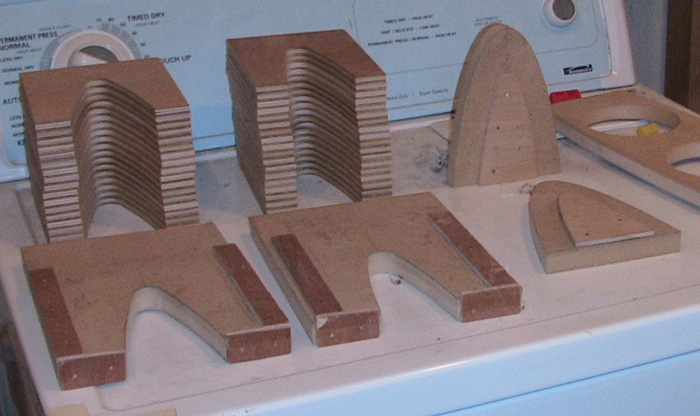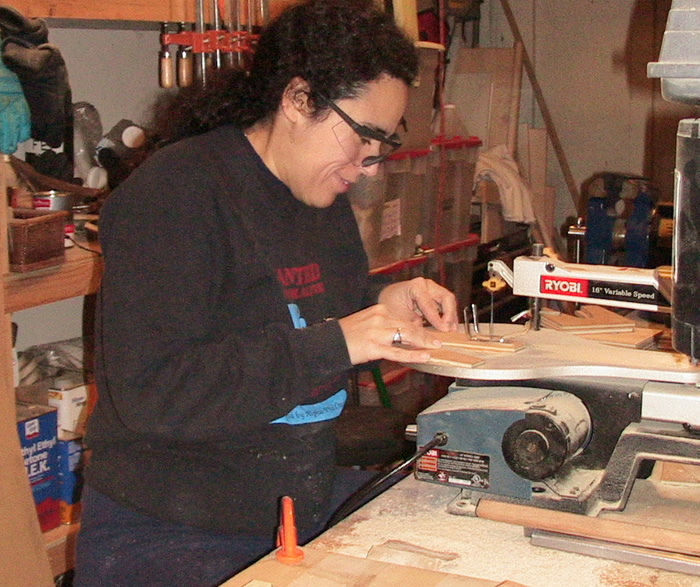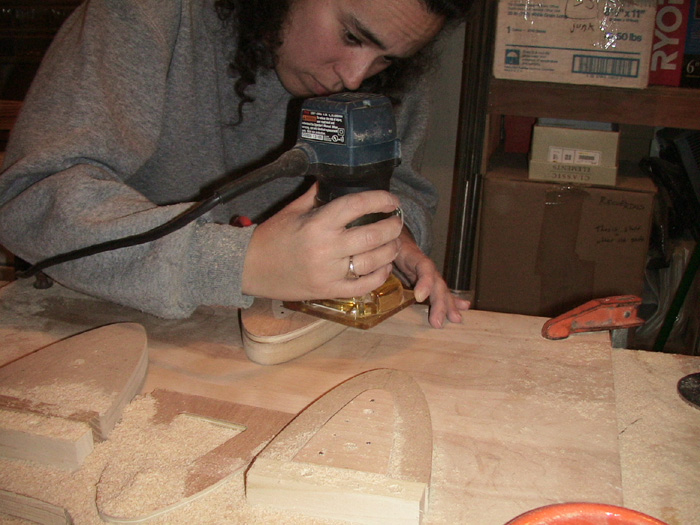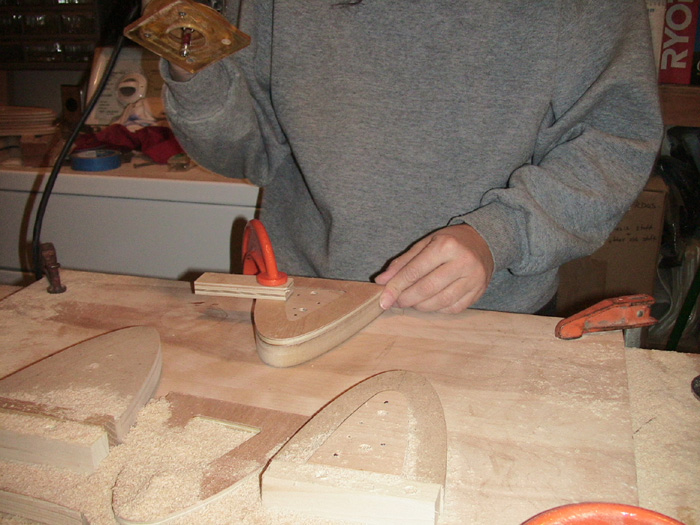I had a request for more pics and further explanation of how we made our nose ribs. Hopefully the following will fill in the blanks.

We made our jigs out of 3/4" mdf which is very easy to work with. The above jigs were made to cut out the inside of the nose ribs with a router. At this point the 1/4" birch is still cut in rectangles to fit between the stops on the jigs.

Then the outside shape was rough cut with a scroll saw. A bandsaw would have worked just as well.

The outside edge was trimmed with a laminate trimmer and bottom bearing flush bit.

Some of our nose ribs were a D-shape and most were open ended like the letter C. For the c-shaped ribs, we put a thin stop at the end of the jig. For the D-shape we made a plug that fit in the hole and attached that to the jig. A clamp was used when necessary to hold the ply to the jig.

We made our jigs out of 3/4" mdf which is very easy to work with. The above jigs were made to cut out the inside of the nose ribs with a router. At this point the 1/4" birch is still cut in rectangles to fit between the stops on the jigs.

Then the outside shape was rough cut with a scroll saw. A bandsaw would have worked just as well.

The outside edge was trimmed with a laminate trimmer and bottom bearing flush bit.

Some of our nose ribs were a D-shape and most were open ended like the letter C. For the c-shaped ribs, we put a thin stop at the end of the jig. For the D-shape we made a plug that fit in the hole and attached that to the jig. A clamp was used when necessary to hold the ply to the jig.




